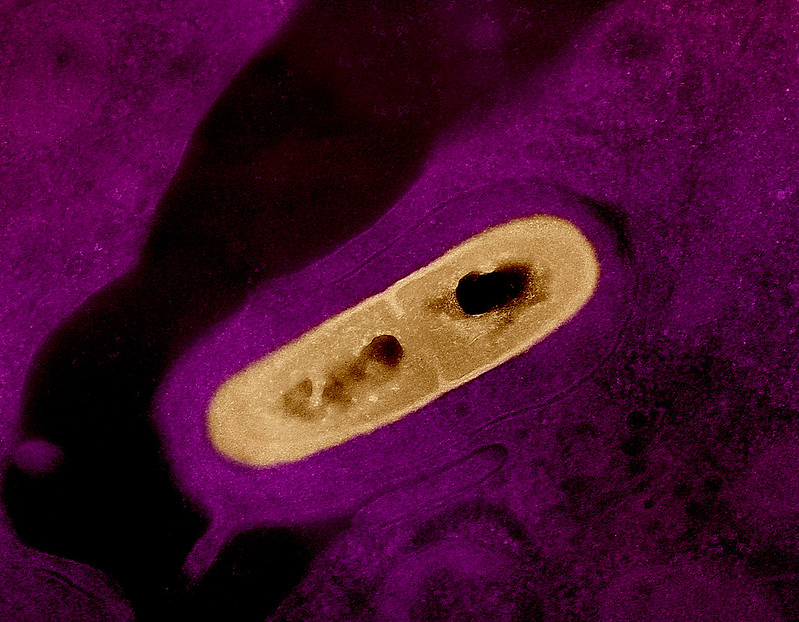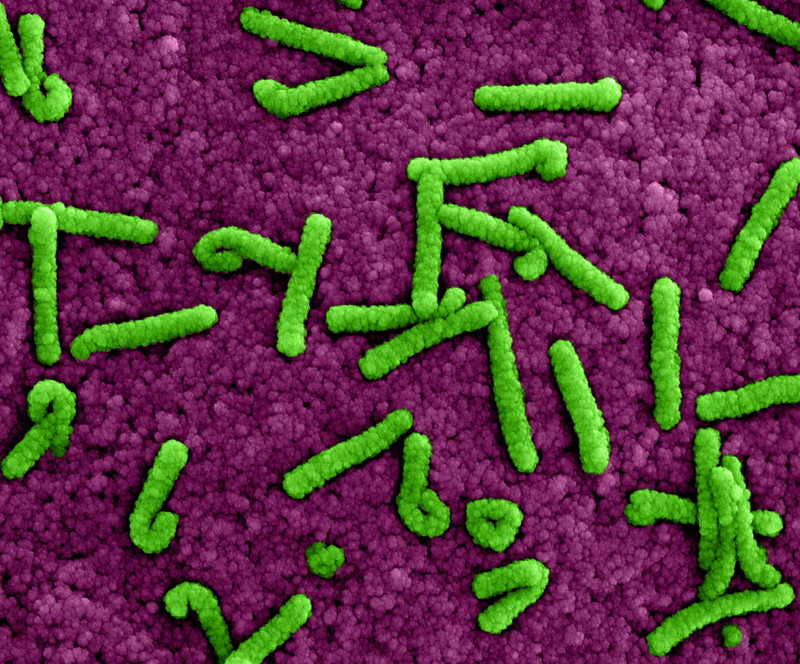CDC announces deadly Listeria outbreak linked to ready-to-eat ...
Late last week the US Centers for Disease Control and Prevention (CDC) announced a Listeria outbreak linked to a South Carolina producer's ready-to-eat meat and chicken. So far 11 cases and 1 death have been identified in four states.

Of 11 people with information available, 9 have been hospitalized, the CDC said. In California, one pregnant women and her twins were sick and both infants died.
"Listeria was found in a sample from the mother and from one of the twin infants, but it could not be found in a sample from the other infant," the CDC said. "Because of this, only the mother and one twin are included as confirmed cases in this outbreak."
California has most cases
The Listeria monocytogenes infections are linked to recalled Yu Shang Food ready-to-eat meat and poultry products. All products produced prior to October 28, 2024, have been included in a recall, and the CDC urges consumers to throw away all recalled products or return to the store where they were bought.
As of last week, Yu Shang Food, Inc, a Spartanburg, South Carolina, establishment, has recalled approximately 72,240 pounds of ready-to-eat meat and poultry products.
Seven cases have been identified in California, two in Illinois, and one each in New York and New Jersey. The average age of case-patients is 64, all patients are Asian, and 55% are female.
Seven people shopped in person and online at markets where Yu Shang food products are sold.
In interviews, patients reported buying their foods from multiple stores. "Seven people shopped in person and online at markets where Yu Shang food products are sold," the CDC said. "Two people (25%) specifically reported eating Yu Shang brand ready-to-eat chicken products."

Review and meta-analysis links preconception antibiotic use to reproductive risks
A systematic review and meta-analysis suggests that preconception exposure to certain antibiotic classes increases the risk of infertility, miscarriage, and congenital anomalies, researchers reported last week in eClinicalMedicine.
While the risks of antibiotic use during pregnancy have been well documented, less attention has been paid to the potential of antibiotic use during preconception—the months before pregnancy when women can take steps to improve their health and the health of their future child. To summarize the existing evidence, researchers with the Chinese University of Hong Kong identified 15 articles on preconception antibiotic exposure that were published from 1975 to 2023 and involved more than 1.2 million women. The primary outcomes of interest included infertility, pregnancy rate, fecundability rate, miscarriage, and congenital malformation, which were measured by odds ratios (OR), relative risks (RR), and fecundability ratios (FR).
Significant increases in risk of infertility, miscarriage, congenital malformationsThe meta-analysis found that macrolide exposure in the pre-conception period was associated with a 35% delay in the probability of getting pregnant (FR, 0.65; 95% confidence interval [CI], 0.48 to 0.88). Sulfonamide users were 2.35 times more likely to develop infertility (OR, 2.35; 95% CI, 1.86 to 2.97). Preconception exposure to all antibiotic classes was associated with 34% increased risk of spontaneous miscarriage (RR, 1.34; 95% CI, 1.16 to 1.53), while trimethoprim intake increased the odds of congenital malformations by 85% (OR, 1.85; 95% CI, 1.54 to 2.23).

In contrast, use of beta-lactams other than penicillin G reduced the odds of infertility by 64% (OR, 0.36; 95% CI, 0.26 to 0.50) and use of quinolones reduced the risk by 13% (OR, 0.87; 95% CI, 0.77 to 0.99).
"Our findings appeal to the critical need for careful consideration of antibiotic use in women of reproductive age to safeguard reproductive health and mitigate potential adverse events in pregnancy," the study authors wrote.
The authors say more studies are needed to uncover the mechanisms of how preconception antibiotics influence reproductive health and to explore novel therapeutic strategies, such as probiotics, that could enhance female health.
Canada confirms first imported clade 1b mpox case
The Public Health Agency of Canada (PHAC) on November 22 announced the country's first imported clade 1b mpox infection, marking the seventh country outside of Africa to report an illness involving the novel clade.
Diy13/iStockThe patient from Manitoba sought care in Canada shortly after returning from travel. PHAC said the case is associated with an ongoing outbreak of clade 1 mpox in central and eastern Africa. It added that the patient is isolating and that a public health investigation, including contact tracing, is under way.
"The risk to the general population in Canada remains low at this time. PHAC continues to actively monitor the situation and will provide updated information as it becomes available," the agency said.

Canada's case came less than a week after the United States reported its first known imported clade 1 case, involving a patient from California who had recently returned from an affected African nation. The other countries outside of Africa that have reported similar cases are Sweden, Thailand, India, Germany, and the United Kingdom.
CDC lifts level 3 travel advisory for Marburg in Rwanda
The Africa Centres for Disease Control and Prevention (Africa CDC) on November 23 commended the United States government for lifting its level 3 travel notice on Marburg virus in Rwanda that was issued on October 7.
NIAID/Flickr ccThe level 3 notice recommend that people reconsider nonessential travel due to Rwanda due its Marburg outbreak. On November 22 the US Centers for Disease Control (CDC) downgraded the advisory to level 2, which recommends taking enhanced precautions.
Africa CDC said in its statement that the October advisory equated to a travel ban and was a significant economic blow to Rwanda as it grappled with a complex and high-risk outbreak.
Rwanda announced the outbreak on September 27 and has been transparent about its investigation and progress against the outbreak, Africa CDC said. On November 18 Africa CDC's director-general sent a letter to the CDC highlighting Rwanda's exemplary outbreak management and calling on the United States to reassess and lift the level 3 travel advisory.
Rwanda passes 3 weeks with no new casesMeanwhile, Rwanda's health ministry on November 22 on X posted an outbreak update, noting that the country has gone 21 days with no new cases and 15 days since the last patient was discharged from medical care. It added that routine surveillance and follow-up of recovered patients continues.

Marburg outbreaks are typically declared over when 42 days have passed—two incubation periods—since the last patient was discharged from treatment. The country's outbreak total stands at 66 cases, 15 of them fatal.
CWD spreads to Montana hunting district near Great Falls
A mule deer buck harvested by a hunter in Montana's Hunting District (HD) 404, north of Great Falls, has tested positive for chronic wasting disease (CWD), marking that district's first detection, Montana Fish, Wildlife and Parks (FWP) said last week in a news release.
FWP will treat these results as a first detection of CWD in HD 404.
While the two initial CWD tests from the deer were positive for the fatal neurodegenerative disease, the final confirmation test was negative. "FWP will treat these results as a first detection of CWD in HD 404," the agency said.
The state's first CWD identification was in wild herds in 2017.
Role of cervids, environment in transmissionCaused by misfolded infectious proteins called prions, CWD affects cervids such as deer, elk, moose, and reindeer. Extremely resilient, prions can persist in the environment for years. CWD can spread from animal to animal and through environmental contamination.
The disease isn't known to infect humans, but authorities advise against eating meat from a sick animal (cooking cannot kill prions) and recommend using precautions when handling carcasses.
Unrestricted financial support provided by













































